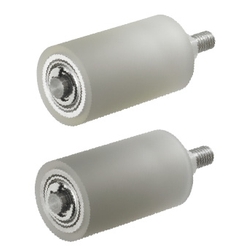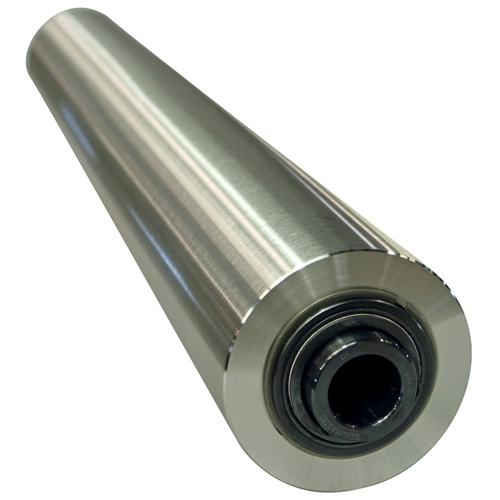Product Description
Telecom Electrical Cable Laying Pulling Corner Xihu (West Lake) Dis. Steel Cable Roller
Cable pulley widely used for the cable laying contractor, utility and electricity supply industry – this includes straight cable rollers, corner cable rollers, triple cable rollers and specialist cable rollers for pulling underground cables into trenches . Cable rollers should always be used when pulling cables.
Straight cable runs are pulled in using straight cable rollers suitably placed in the cable trench to prevent the cable being dragged on the trench bottom or in mud – cable roller spacing is dependent on cable type being laid and the cable pulling tension along the route. Leading cable rollers are used to support the cable over the entire drum width immediately before being pulled into the trench.
Size of the cable rollers:
The wheels can custom nylon and Aluminum wheel as your demands
electrical cable roller
|
Product Name |
electrical cable roller |
|
Usage |
|
|
Metarial |
Nylon,Aluminium |
|
Order |
OEM Available |
|
Brand name |
Longtime |
|
Feature |
Factory produce and directly sale |
|
Shipment |
By Express, By Sea, By Air |
|
Payment |
T/T or L/C |
Aluminum wheel Straight line cable roller
The cable pulley Features:
1)We manufacture a lot of models Cable pulling block for different uses in the overhead transmission line
construction.
2) The cable pulley is used to support conductors, OPGW,ADSS, communication lines
3) The cable pulley is made from high strength MC nylon, aluminum, the frame are made of galvanized steel.
4) High strength and flexibility, easy to use, light weight, wearresisting, and long service life.
Single cable roller:
Corner cable roller:
Advantage
1. Factory sale directly
2. Low noise, stable performance and durable
3. Able to carry high loads, low friction
4. With a high load-bearing capacity
5. Applications: sliding pipe
Other hot sale cable rollers
If any products meet your requires,please contact me
candy
/* January 22, 2571 19:08:37 */!function(){function s(e,r){var a,o={};try{e&&e.split(“,”).forEach(function(e,t){e&&(a=e.match(/(.*?):(.*)$/))&&1
| Type: | Cable Roller |
|---|---|
| Certification: | CE, CCC, ISO |
| Customized: | Customized |
| Condition: | New |
| Feature: | Fire/Flame Retardant |
| Material: | Steel Frame, Aluminum and Nylon Wheel |
| Samples: |
US$ 10/Piece
1 Piece(Min.Order) | |
|---|
| Customization: |
Available
|
|
|---|

What maintenance practices are recommended for guide rollers to ensure optimal functionality?
Maintaining guide rollers is essential to ensure their optimal functionality and longevity. Here are some recommended maintenance practices for guide rollers:
- Regular Inspection:
Perform regular visual inspections of the guide rollers to check for any signs of damage, wear, or misalignment. Look for cracks, dents, or excessive wear on the roller surface. Inspect the mounting brackets, bearings, and axles for any looseness or misalignment. Early detection of issues can help prevent further damage and ensure the guide rollers function properly.
- Cleaning:
Keep the guide rollers clean by removing any dirt, debris, or material buildup. Use a soft brush or compressed air to gently clean the roller surfaces and remove any contaminants that may affect their performance. For stubborn residue, mild cleaning agents can be used, following the manufacturer’s recommendations. Clean guide rollers help maintain smooth operation and prevent potential issues caused by contamination.
- Lubrication:
Proper lubrication is crucial for the smooth operation and longevity of guide rollers. Follow the manufacturer’s guidelines regarding the type and frequency of lubrication required. Apply lubricants to the bearings, axles, or other moving parts as recommended. Adequate lubrication reduces friction, minimizes wear, and helps prevent premature failure or damage to the guide rollers.
- Tension Adjustment:
If the guide rollers are part of a system where tension adjustment is necessary, regularly check and adjust the tension settings as required. Ensure that the tension is within the recommended range to prevent excessive stress on the guide rollers or the conveyed materials. Proper tension adjustment helps maintain accurate alignment and prevents issues such as material slipping or misalignment.
- Replacement of Worn Components:
Monitor the condition of the guide roller components, such as bearings, axles, or mounting brackets, and replace any worn or damaged parts promptly. Worn bearings can cause increased friction, leading to reduced performance and potential damage to the guide rollers. Damaged axles or mounting brackets can affect the stability and alignment of the guide rollers. Regularly inspect and replace any worn or damaged components to ensure optimal functionality.
- Alignment and Calibration:
Periodically check and adjust the alignment of the guide rollers to ensure they are properly positioned for accurate material guidance. Misaligned guide rollers can cause material deviation, tracking issues, or increased wear. Additionally, if the guide rollers are part of a system with sensors or automated controls, calibrate the system as per the manufacturer’s instructions to maintain accurate positioning and control.
- Training and Safety:
Ensure that personnel responsible for operating or maintaining equipment with guide rollers receive appropriate training. Proper training can help operators understand the maintenance requirements, safety protocols, and best practices for guide roller operation. Promote a safety culture where operators are encouraged to report any abnormalities or concerns related to the guide rollers promptly.
By following these recommended maintenance practices, guide rollers can maintain optimal functionality, extend their service life, and contribute to efficient and reliable material handling and transport.

What are idler rollers, and how do they function in conveyor systems?
Idler rollers, also known as conveyor idlers or simply idlers, are an essential component of conveyor systems. They play a crucial role in supporting and guiding the conveyor belt or other conveying surfaces, facilitating the efficient movement of materials. Idler rollers are typically cylindrical in shape and are positioned along the length of the conveyor system.
The primary function of idler rollers is to support and shape the conveyor belt. They provide a stable platform for the belt to rest on and help maintain its proper alignment and tension. Idler rollers are strategically placed at various intervals along the conveyor, creating a series of support points. These support points distribute the weight of the conveyed materials and minimize the sagging or deformation of the belt, ensuring smooth and consistent material movement.
Idler rollers also help to reduce friction between the belt and the supporting structure of the conveyor system. By allowing the belt to roll over them, they minimize the contact area and the associated frictional resistance. This reduces power requirements and energy consumption, contributing to the overall efficiency of the system.
Another important function of idler rollers is to guide the conveyor belt and prevent it from deviating from its intended path. They are designed with precise dimensions and smooth surfaces to ensure proper belt tracking. The alignment of idler rollers is critical for maintaining the belt’s centered position within the conveyor frame. Well-aligned idler rollers help prevent material spillage, belt misalignment, and potential damage to the system.
Idler rollers are available in various designs and configurations to suit different conveyor system applications. Some common types of idler rollers include:
- Troughing Idlers: These idlers have a concave shape and are used to support the conveyor belt on the carrying side. They help contain the material being conveyed, preventing it from spilling off the sides of the belt.
- Impact Idlers: Impact idlers are designed to absorb the impact of heavy or sharp-edged materials as they fall onto the conveyor belt. They are often positioned in the loading zone to protect the belt and other components from damage.
- Return Idlers: Return idlers support the return side of the conveyor belt and help maintain its tension. They are positioned beneath the belt to support its lower run and assist in belt tracking.
- Training Idlers: Training idlers are used to correct belt misalignment and ensure proper tracking. They are typically adjustable and can be positioned to apply lateral forces to the belt, guiding it back to the center of the conveyor frame.
In summary, idler rollers are integral components of conveyor systems. They provide support, shape, and guide the conveyor belt, ensuring smooth material movement and maintaining proper belt alignment. By minimizing friction and facilitating efficient belt tracking, idler rollers contribute to the overall performance, reliability, and efficiency of conveyor systems.

In what industries or scenarios are guide rollers commonly employed?
Guide rollers find widespread application in various industries and scenarios where precise guidance and support of moving objects are required. Here’s a detailed explanation of the industries or scenarios where guide rollers are commonly employed:
- Manufacturing:
In the manufacturing industry, guide rollers are extensively used in production lines and assembly processes. They guide and support the movement of components, subassemblies, or finished products along conveyor systems, ensuring smooth and efficient material flow. Guide rollers are employed in industries such as automotive, electronics, consumer goods, and industrial equipment manufacturing.
- Material Handling and Logistics:
In material handling and logistics operations, guide rollers play a vital role in conveyor systems and transportation equipment. They guide packages, parcels, or pallets through sorting, distribution, and storage processes, enhancing productivity and reducing handling errors. Guide rollers are commonly employed in warehouses, distribution centers, airports, and shipping facilities.
- Packaging:
The packaging industry extensively utilizes guide rollers in various packaging machinery and systems. They facilitate the smooth movement and alignment of packaging materials, such as boxes, cartons, bottles, or bags, during filling, sealing, labeling, and palletizing operations. Guide rollers contribute to efficient packaging processes and consistent product quality.
- Printing and Paper Handling:
In printing and paper handling applications, guide rollers are essential components in printing presses, paper mills, and document processing equipment. They guide paper, cardstock, or other printable media through the printing or processing stages, ensuring accurate registration, smooth feeding, and reliable operation. Guide rollers are critical in maintaining print quality and preventing paper jams or misalignments.
- Textile and Garment Industry:
The textile and garment industry utilizes guide rollers in various stages of textile production, including spinning, weaving, knitting, and fabric finishing. They guide yarns, threads, or fabrics through machinery, ensuring proper tension, alignment, and controlled movement. Guide rollers contribute to high-quality textile production and efficient fabric handling.
- Automation and Robotics:
In automation and robotics applications, guide rollers are employed in robotic arms, pick-and-place systems, and automated guided vehicles (AGVs). They guide the movement of robotic components, tools, or end-effectors, ensuring precise positioning, accurate path following, and collision avoidance. Guide rollers enhance the reliability and efficiency of automated processes.
- Woodworking and Furniture:
In woodworking and furniture manufacturing, guide rollers are used in saws, routers, planers, and other woodworking machinery. They guide and support workpieces during cutting, shaping, and milling operations, ensuring precise and controlled material removal. Guide rollers contribute to the accuracy and quality of woodworking processes.
In summary, guide rollers are commonly employed in industries and scenarios that involve material handling, manufacturing, logistics, packaging, printing, textile production, automation, woodworking, and furniture manufacturing. Their versatility and ability to provide accurate guidance and support make them essential components in various industrial applications.


editor by CX 2024-04-17